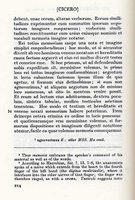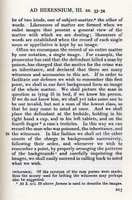(46) the Rhetorica ad Herennium

 For The Garden of Delights/El Jardín de las Delicias the most important memory system is probably the Rhetorica ad Herennium, traditionally attributed to Cicero but already regarded as anonymous in the late fifteenth century. There were various editions in the sixteenth century, sometimes attributed to Cicero and sometimes not. The Loeb Classics edition is part of a set of the works of Cicero, but clearly identified in the introduction as anonymous.
For The Garden of Delights/El Jardín de las Delicias the most important memory system is probably the Rhetorica ad Herennium, traditionally attributed to Cicero but already regarded as anonymous in the late fifteenth century. There were various editions in the sixteenth century, sometimes attributed to Cicero and sometimes not. The Loeb Classics edition is part of a set of the works of Cicero, but clearly identified in the introduction as anonymous.The Rhetorica ad Herennium memory system is for memorizing the details of legal cases, by memorizing a set of imaginary places and then mentally placing imaginary bizarre scenes in the imaginary places. It might not have been as difficult as it sounds, since reading modern detective stories or following criminal trials often involves visualizing architectural spaces and events that take place in them.
The Rhetorica ad Herennium only provides one example of a memory image, and it is an interesting one. “We” are defending a client who has been accused of murder and the memory image does not depict for instance our client drinking with friends several miles away from the alleged murder scene, but instead shows him standing next to an invalid’s bed holding a cup in his hand. In the memory image, the client might be guilty, and “we” seem to be planning to argue “It’s not as bad as it looks.” The memory “picture” does not show what happened, or even what “we” think might have happened.

